What's New
Displaying results 3761 - 3770 of 4052
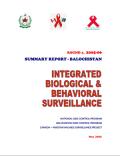
Resource | Publications,
The findings presented here are part of the round one surveillance activities carried out in eight cities of Pakistan by the National AIDS Control Program through its Canada-Pakistan HIV/AIDS Surveillance Project (HASP). The basic goal of this research is to estimate and map the various HIV high-risk groups in Pakistan, including IDUs and Commercial sex workers; estimate the prevalence of HIV infection and collect behavioral data for monitoring of the epidemic and its associated factors in the country. Each surveillance round includes a mapping study to develop the sampling frame followed by in-depth interviews with High-Risk Groups (HRGs) to collect behavioral as well as biological data.
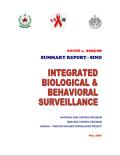
Resource | Publications,
The findings presented here are part of the round one surveillance activities carried out in eight cities of Pakistan by the National AIDS Control Program (NACP) through its HIV/AIDS Surveillance Project (HASP). The primary goal of this research is to estimate and map the various HIV high-risk groups in Pakistan, including injection drug users (IDUs) and commercial sex workers (CSWs); estimate the prevalence of HIV infection and collect behavioral data for monitoring of the epidemic and its associated risk factors in the country.
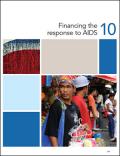
Resource | Publications,
From UNAIDS' launch in 1996 until 2005, available annual funding for the response to AIDS in low- and middle-income countries increased 28-fold, from US$ 300 million to US$ 8.3 billion. Existing pledges, commitments and trends suggest the rate of increase may be declining and that available funds will be US$ 8.9 billion in 2006 and US$ 10 billion in 2007.
Global and national advocacy to boost and sustain political leadership and public support remain essential. Also essential is making far better use of funding flows that are available. That means streamlining the flow of financial resources to the front lines of the epidemic, putting it to optimal use and providing HIV-related prevention, treatment, care and support as quickly as possible to everyone in need.
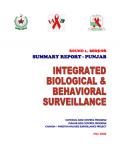
Integrated Biological and Behavioral Survey in Pakistan Summary Report - Punjab: Round 1 - 2005-2006
Resource | Publications,
The findings presented in this report are part of the round one surveillance activities carried out in three cities of Punjab by the National AIDS Control Program / Punjab AIDS control Program through its HIV/AIDS Surveillance Project (HASP). The purpose of present study was to map the vulnerable population like injecting drug users (IDUs), female sex workers (FSWs), male sex workers (MSWs) and eunuch sex workers (ESWs) in Punjab. After mapping behavioral and serological data was collected for these vulnerable groups in order to monitor the epidemic in the province.

Resource | Publications,
Women make up nearly half of all migrants, an estimated 95 million of 191 million people living outside their countries of origin in 2005.1 Having said this, after many years of observing migration and collecting data there is remarkably little reliable information about women as migrants. This anomaly underlines their continuing invisibility to policymakers and development planners. The High-Level Dialogue on International Migration and Development by the General Assembly on 14-15 September 2006 offers the best opportunity in a generation to address the rights, needs, capabilities and contribution of women migrants.
This report includes the different perspectives of experts on female migration from countries of origin, transit and destination from all five continents, as well as representatives from international agencies, NGOs and diaspora organizations. This twoday expert group meeting also produced a set of conclusions and recommendations for all stakeholders to be conveyed to the United Nations High-Level Dialogue on International Migration and Development at the General Assembly in September 2006.
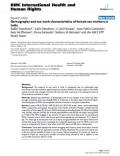
Resource | Publications,
The majority of sex work in India is clandestine due to unfavorable legal environment and discrimination against female sex workers (FSWs). We report data on who these women are and when they get involved with sex work that could assist in increasing the reach of HIV prevention activities for them.
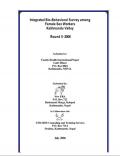
Resource | Publications,
This study is the second round of the Integrated Bio-Behavioral Survey (IBBS) conducted among 500 female sex workers (FSWs), both street and establishment based, in the Kathmandu Valley. The IBBS was carried out during the months of January and March 2006. The survey measured HIV and syphilis prevalence among FSWs and variables which are associated with a risk of HIV infection, such as condom use, sexual behaviors, knowledge of HIV/AIDS, reported cases of sexually transmitted infections (STI), STI treatment behaviors, exposure to HIV/AIDS messages and drug habits.
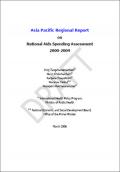
Resource | Publications,
Tracking how much resources were spent on HIV/AIDS as well as forecasting resource needs for scaling up responses are important inputs for effective national and global responses to the AIDS pandemic. Efficient allocation of international financial assistance and national resources for HIV/AIDS should be guided by transparent information on sources and uses of funds. The lack of timely, accurate information about spending represents a key constraint for policy decision on effective use of limited resources in developing countries.
The needs to further improve data systems are clear. At present, there has been limited success in establishing resource tracking system and a comprehensive information regarding where those funds came from and how they were spent. As a result, policy makers are unlikely to be able to effectively mobilize additional resources and allocate them toward the populations and types of services that are vital to confront the HIV/AIDS epidemic.
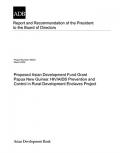
Resource | Publications,
The HIV/AIDS Prevention and Control in Rural Development Enclaves Project proposes to help strengthen government leadership and the implementation of strategies to contain the spread of HIV among rural populations.
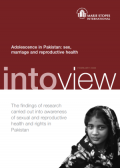
Resource | Publications,
With 158 million people, Pakistan is one of the most populous countries in the world. It is also one of the poorest, with 66% of the total population living on less than US$2 a day (Population Reference Bureau, 2005.). In Pakistan, as in many developing countries, poverty is intrinsically linked with poor sexual and reproductive health (SRH).





